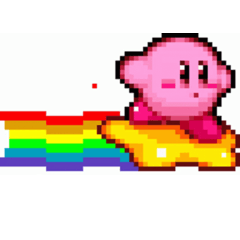

* The thickness of the border varies depending on the size of the canvas *
* If the canvas is small, the border is thick*
Simple to use

-Sketch (omitted) [sketch layer]
* Leave the sketch layer at the top

- Fills the color that will be the border [border layer]
* Create a border layer underneath the sketch layer

- Put the inner color of the border (it doesn't matter if you color a little like the photo) [inside the border layer]
* Create a layer inside the border up the border layer, down the sketch layer

- Select the border layer and wrap it all up

Deliverable
(Awkward shape, in the process of 2
It's a great place to stay.

1 Sketch layer
3 Inner layer of the border
2 Border layer
Even if the border is not made in the above method, the border is not
the size of the canvas is small.
* The thickness of the border varies depending on the size of the canvas *
* If the canvas is small, the border is thick*
* 캔버스 크기에 따라 테두리의 두께가 다르게 나옵니다 *
* 캔버스가 작으면 테두리가 두껍습니다*
간단한 사용 방법

-밑그림 (생략가능) [밑그림레이어]
* 밑그림 레이어는 위쪽에 둡니다

- 테두리가 될 색을 채웁니다 [테두리레이어]
* 밑그림 레이어 밑으로 테두리레이어를 만듭니다

- 테두리의 안쪽 색을 넣는다 (사진처럼 조금만 색칠해도 상관 없습니다) [테두리 안쪽 레이어]
* 테두리 레이어 위로, 밑그림 레이어 아래로 테두리 안쪽 레이어를 만듭니다

- 테두리 레이어를 선택하고 모두 감쌉니다

결과물
(모양이 어색한건 2번 과정에서
채색을 저 모양으로 했기 때문입니다ㅎㅎ;)

1 밑그림 레이어
3 테두리 안쪽 레이어
2 테두리 레이어
위 방법대로 하였음에도 테두리가 만들어지지
않은 이유는 캔버스의 사이즈가 작기 때문입니다
* 캔버스 크기에 따라 테두리의 두께가 다르게 나옵니다 *
* 캔버스가 작으면 테두리가 두껍습니다*









































